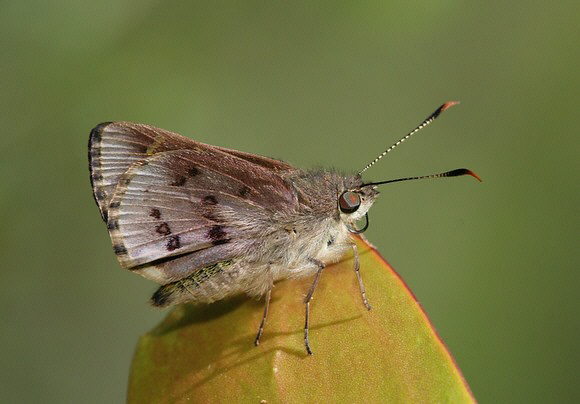
Introduction
The subfamily Trapezitinae comprises of about 60-70 smallish, robust, heavy-bodied skippers, all of which are confined to the Australian region (including New Guinea). There are 18 genera, of which Trapezites is the largest, with between 15-18 species depending on taxonomic interpretation. Unlike Hesperiinae, males of Trapezitinae do not possess an androconial sex-brand.
Each genus of the Trapezitinae has larvae that specialize in feeding on particular plant genera, e.g. Trapezites all feed on spike rush Lomandra.
Trapezites praxedes is found in southern Queensland, New South Wales and Victoria.
Habitats
This species is found in rough scrubby grassland in the temperate hills of eastern Australia, from Queensland to Victoria.
Lifecycle
The dome-shaped egg is white with and faintly ribbed. It is laid singly on leaves of the foodplants which include Lomandra confertifolia and related species of Laxmanniaceae. The larva is reddish or greenish brown with a faint dark dorsal line. It has a brown head with white dots. It lives within a tubular shelter constructed from the leaves, and feeds nocturnally. The pupa is rusty brown mottled with black, and is formed within the leaf shelter.
Adult behaviour
In hot sunny conditions the butterflies usually hold their wings erect, or slightly apart, when at rest.
When conditions are cooler they sometimes adopt the traditional Hesperiine posture, with forewings raised at 45, and hindwings held outspread. It is more common however for both the fore and hindwings to be held flat, with the hindwings obscured, as shown in the photo at the top of this page.
Males are highly territorial, defending their patches of ground vigorously. If one male intrudes into the territory of another, the pair spiral skywards to a height of several metres, revolving around each other at high speed, until the intruding male relinquishes claim to the territory and flies away. The winning male then returns to his original perching place. The butterflies make a loud humming or whirring noise as they fly.

